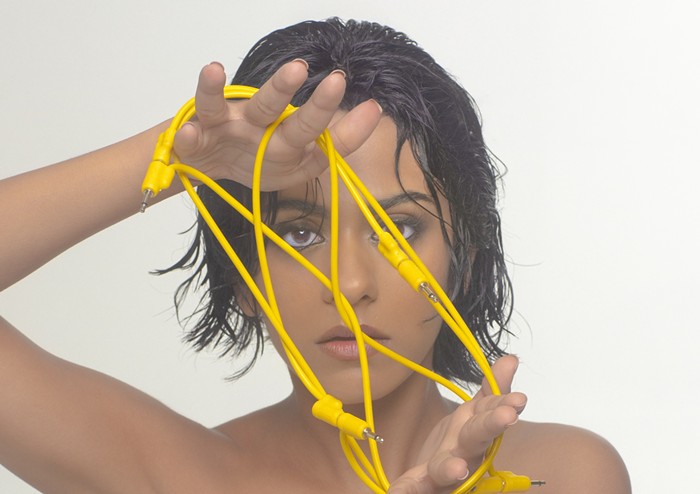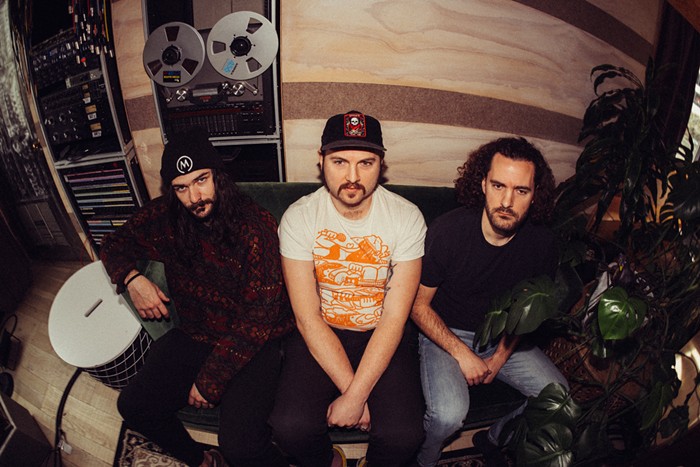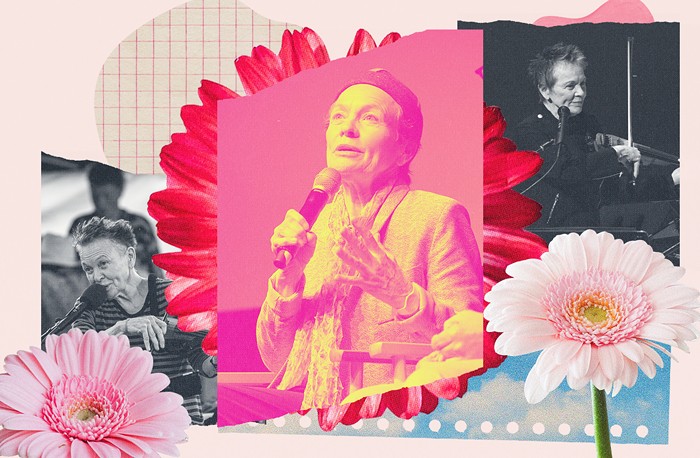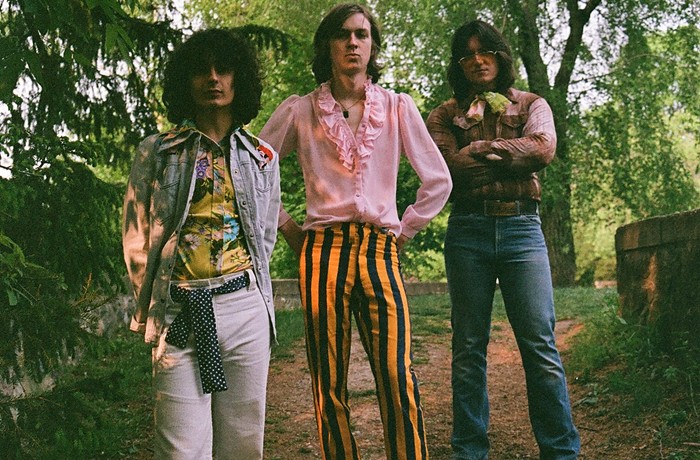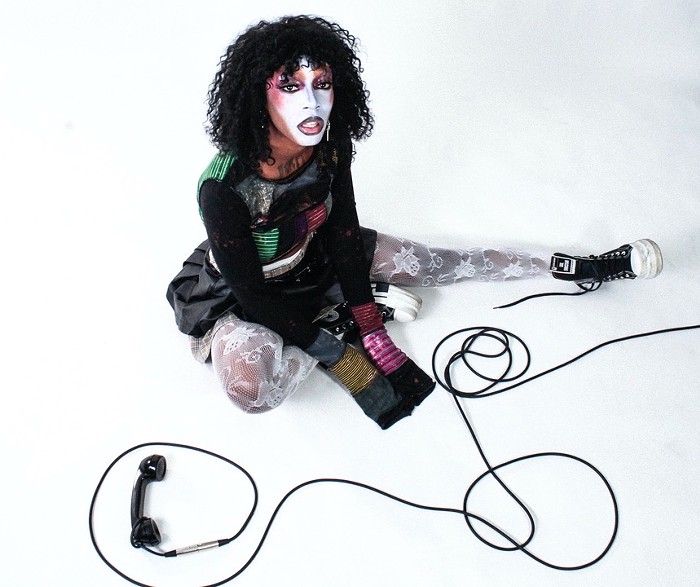Bobby Azarbayejani and Aashish Gadani are the hardest-working visual production duo in Seattle. Performing as Coldbrew Collective, Azarbayejani and Gadani provide live visuals at shows to accompany musicians, projecting video they design from their computers onto a screen beside the performers.
For their monthly residency at the tape night HISSSSSSS (March 25 at Vermillion), they use a mash-up of old live-action VHS movies, and for their monthly sets at the techno night MOTOR (March 12 at Kremwerk) or the noise night SQUALL (March 16 at Kremwerk), their visuals are more often abstract, computer-generated geometric shapes in psychedelic colors and patterns. They usually tailor their visuals to the type of music or venue, but the thing all their visuals have in common is a confounding synthesis of analog and digital technologies.
Both Azarbayejani and Gadani are computer programmers in their early 20s who have grown up immersed in youth internet culture—Azarbayejani described their visuals as a "Deep Into YouTube' aesthetic"—yet both have an equally strong interest in anachronistic technologies, especially tapes and hardware. I sat down with Coldbrew to discuss their gear and technique, and how their work negotiates these contradictory fascinations.
"Basically, we're taking digital material and interpreting it through analog," says Azarbayejani. "We route all our digital stuff from our computers to our analog boxes. If you take a look at what's on our computer screens, a lot of the time it's very crisp and digital-looking, but then if you look at the screen on the wall, you'll see all that analog warmth and fuzziness."
The most important piece in this gauntlet of analog hardware is a circuit-bent video color processor box. "Circuit bending is when you open up something electronic and connect random soldering points to purposely short-circuit the machine to make it do unpredictable things," says Gadani. "It's very big in the noise scene, where people will add random switches and knobs to Speak & Spells and other kids toys." This processor would traditionally be used to adjust levels like brightness or contrast, but Coldbrew's circuit-bent version creates adjustable glitched distortions in the picture and colors when you run a video feed through it, and its effects are mostly unpredictable.
"We have a black box that we don't understand, and every time you use it on different visuals, it can react completely differently," says Azarbayejani. "We can barely replicate stuff we do," adds Gadani. "Like, we find cool things going on with all the feedback loops in our boxes, and we'll leave all the knobs at that setting for the night, but even if you turn all the knobs back to the same spot, it won't do the same thing."
Another analog tool in the Coldbrew kit is a video mixer that enables them to pick a color on the screen and have all similar colors changed to another input. For their February VHS release for Simic, they shot dashcam footage at night in Sodo, used an equalizer to isolate the glare from streetlights and oncoming cars, and then replaced that with feedback, creating remarkable pools of static in place of the lights. This careful yet uncontrollable corruption of source footage or 3-D modeling is what makes a Coldbrew set so interesting. "Some of the analog stuff works so well because it actually dulls some of the video—otherwise it would look too sharp," says Azarbayejani. "People would look at it and think, 'Okay, this is very clearly a program you wrote,' but when you have the analog bit of it, there's this tension, this element of the unknown." "The how'd-he-do-dats eat it up," adds Gadani.
When the visuals are designed to look like they're malfunctioning, it's astonishing to remember how much meticulous coding goes into their work. "I started screwing around with [the programming language] Processing when I first heard about it early on in college," says Azarbayejani. "I always wished I was good at drawing and never was, but with Processing, I could just write up some code and make whatever I wanted."
"As abstract and weird as my stuff looks," says Gadani, "it's all pretty deep computer vision on my side." He continues. "I'm not trying to be like, 'Look, I learned how to stitch a panorama together in code,' but I'll use what you use to stitch panoramas together to do other shit. For a while, I was using a fluid simulator I wrote with C++, but no one cares and no one needs to care... It's funny how much time I spending fixing my code and then it just looks broken, ultimately."
Coldbrew Collective also incorporate cheeky and irreverent source material. For the first visual set they ever did, Azarbayejani scraped all the names of people "attending" on Facebook and fed them through an anagram generator, and Gadani projected the anagram nonsense words on a loop. "We're constantly looking for sillier visuals," says Gadani. "I really want to play Half Life on my computer during someone's set and have Bobby glitch it out. We've also talked about making levels in Counter-Strike, and the whole visual set is just walking around a dystopian, abstract, physically impossible level." Gadani is also working on a collaboration with Velocity dancer and mathematician Hannah Simmons, in which he hopes to analyze the movement of dance mathematically, model it, and project it in a collaborative performance.
Right now, Coldbrew have an accidental monopoly on Seattle visuals in this particular scene—on top of their MOTOR, SQUALL, and HISSSSSSS nights this month, you can also see them on March 20 at Black Lodge and March 27 at Hollow Earth Radio—but they have ambitious plans to grow the community and skill-share. Look out for a collaborative lecture series and possible gear-sharing community space from them next year. With some hard work, you too could learn the secrets of making striking art from unpredictable methods. ![]()

